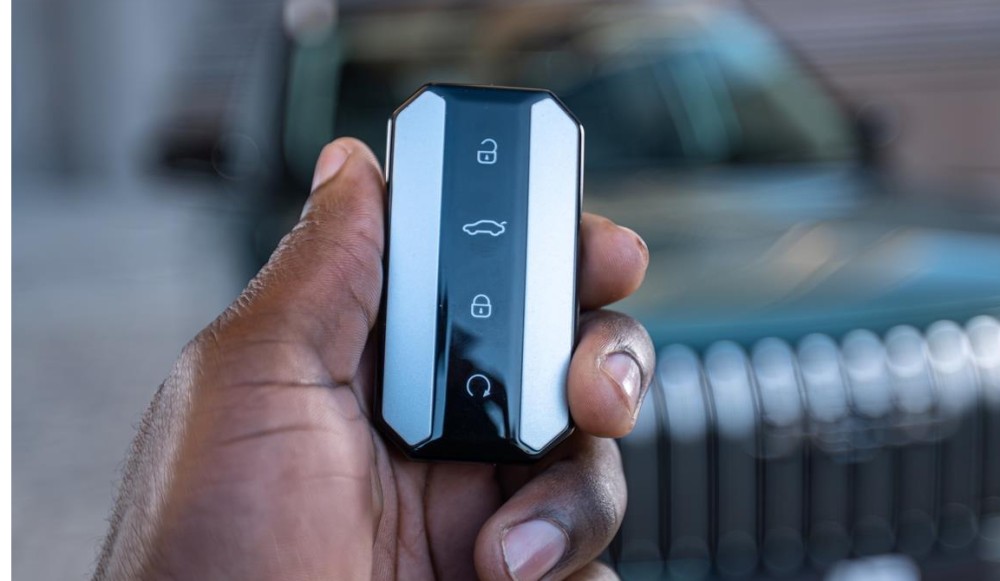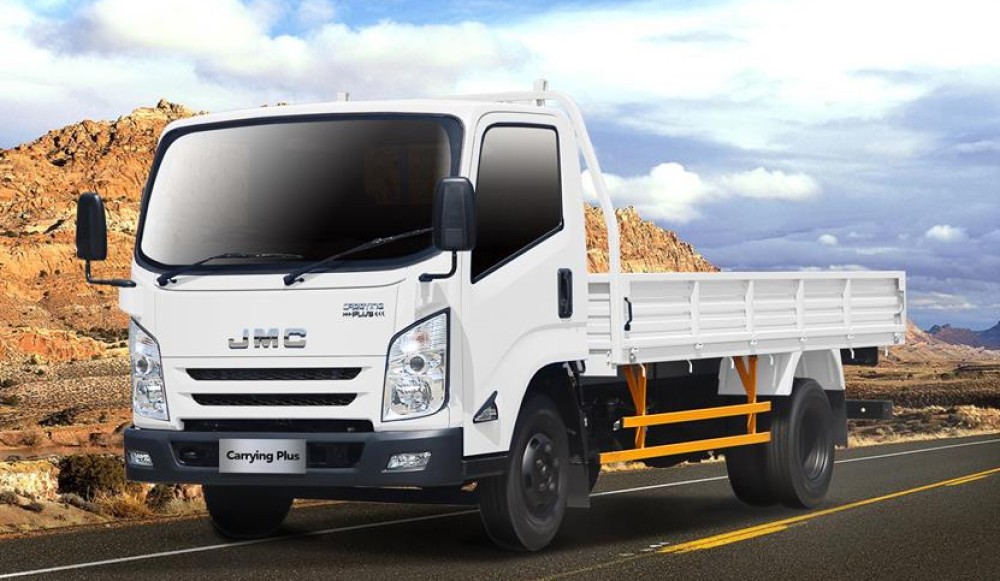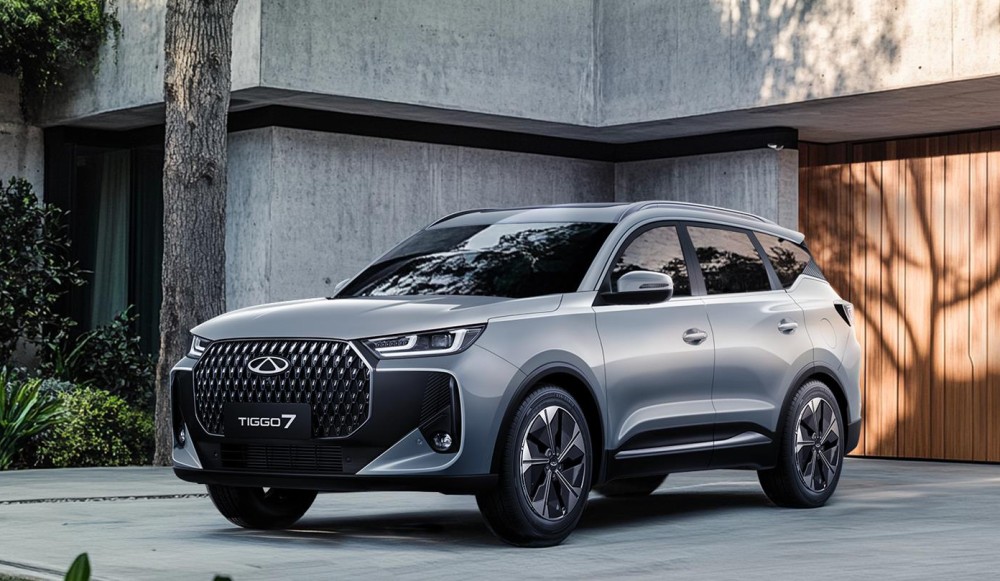
One major mechanical change for 2024 elevates the very satisfying single-motor Volvo XC40 EV to near-perfection. If ever you needed evidence that excellence should go deeper than mere numbers, look no further.
We like:
Perky, effortless acceleration
Real-world battery capacity
Fun-to-drive character with some RWD purity for giggles
Overall refinement
Spacious cabin with thoughtful storage options
One-pedal driving calibration is responsive but not hyper-active
We don’t like:
Lengthy charging times from a home power outlet
Inadequate fast-charging infrastructure
Wired smartphone mirroring in a 2024 premium product?
Soggy brake pedal feel
Poor visibility to the rear without the dual-motor model’s 360-degree camera

There was some confusion at our offices when this Volvo XC40 Recharge Single Motor arrived for review midway through March 2024. After all, Colin already reviewed it in October 2023, and even admitted to really enjoying his time behind the wheel of this comparatively affordable EV, despite being an Internal Combustion Engine kind of guy at heart.
But, never one to turn down new experiences and eager to see what the electric XC40 is all about, I promptly grabbed its keys and left Colin to spend naughty time with the GWM Tank 400 instead. For my part, I was curious to find out whether electric propulsion improved on the overall driving experience of the XC40, because the petrol-powered variant I tried out a few years ago didn’t entirely convince me of either its merits or its pricetag.
It turns out that, while this latest test vehicle and the one Colin drove last year have the exact same model designations, the older example was driven by its front wheels, in contrast to the 2024 XC40, which drives the rear wheels in all single-motor applications. This is a bigger deal than you might think, because it affects the overall driving dynamics even if straight-line performance is largely unchanged.

And boy, did this small SUV change my mind about entry-level EVs and the Volvo XC40 in general. It feels as expensive as it is, offers real-world performance by the spadeful, and can even fit into the lifestyle of someone with a daily Jozi-Pretoria commute - if the buyer heeds the usual EV caveats, of course.

Appearance
From the outside, there’s absolutely nothing to set the 2024 XC40 Recharge apart from its predecessor, and it doesn’t really look all that different to the ICE-powered XC40s, either. Apart from the badging (which extends to a high-contrast “RECHARGE” decal on the tailgate and recessed imprints in the C-pillar trim strips), the main giveaway is the blanked-off front grille.
There are only two slim air intake slots in front, below the grille and in the lower bumper, which introduce cooling air for the air-con condensor and the battery pack’s thermal management system. Finished in pearlescent metallic black paintwork, the build quality was obviously to a very high standard, with smooth paint application and tight, even panel gaps.

The only downsides to choosing this colour are that it hides the matte-black wheelarch extensions, which could make the wheel wells look a bit oversized despite the sizeable 19-inch standard alloy wheels hidden within, the fact that it looks dusty within minutes of leaving a car wash, and the way it camouflages the interesting creases and recesses used in the body styling. For the rest, it looks nicely understated and upmarket at the same time, and drew unanimous praise for its styling from all observers.
Related: Volvo’s own gallery shows more detail shots of the XC40 Recharge here.
Volvo XC40 interior
Inside the cabin, the XC40 boasts solid assembly quality and an attractive design. This model still features physical main audio system controls, so it’s easy to adjust these functions on the move, while the air-con controls are accessible through a shortcut icon on the lower edge of the central touchscreen.
There’s plenty of cabin room for at least four large adults and their in-car chattel, along with up to 443 litres of squared-off cargo volume with a false floor behind a large, electrically-operated tailgate. This rises to 1 295 litres with the rear seats folded flat, and is supplemented with a separate front storage space, where the motor used to live.

This test car arrived as close to its base spec as you’re ever likely to see, and missed out on the glass sunroof, electric passenger seat adjustment, and audio system upgrades you’d normally find in higher-priced (or comprehensively optioned) Volvos. It unfortunately also missed out on the panoramic-view camera featured in the dual-motor XC40 Recharge, because those chunky roof pillars made parking a bit fraught even with the standard rear-view camera.
The seats were upholstered in durable-looking flat-weave cloth, and the steering wheel was covered in artificial leather, so the test car’s interior was entirely unadorned with conventional modern premium gadgets. And that’s pretty fantastic, really. Optional extras usually disguise deficiencies in a test car’s basic make-up, so the opportunity to sample one in base trim allows one to experience the product in its purest form. This XC40, even without options, has almost everything modern driving needs but none of the gadgets which could hide the car’s true nature.
Related: Get a complete spec sheet for the XC40 on Volvo’s official webpage for this model.
Standard Volvo XC40 Recharge features
The basics are all covered properly, though. The driver’s pew has electric operation which stretches to multi-way lumbar adjustment in addition to the usual fore-aft/height/backrest adjustments, and incorporates two-position memory functions linked to the key fob’s configured preferences. The seats deserve an honorable mention for their sheer comfort, and continues Volvo’s tradition of offering some of the best seats available anywhere.
The same applies to the basic audio setup. While it lacks the high-level digital sound processing which comes with the Harman Kardon upgrade and is down on both speaker count and power output (“only” 8 speakers and 250W as standard), the high-end system wasn’t really missed because even the normal installation is quite a thumper.

A wireless charging pad is provided in the centre console, but, while it did a reasonable job of slightly increasing the temperature of my iPhone, it didn’t add much in the way of usable charge to its battery. And on the subject of wireless stuff: Surely it wouldn’t be too much to expect wireless smartphone mirroring in a car this high-tech? Android Auto and Apple CarPlay are both included, but require a cable to be plugged into the standard-fit USB-C ports, almost as the norm was about 6 years ago.
Volvo’s driver assistance system is also one of the best out there and is standard on the XC40 Recharge, but it may not really be suitable to local driving habits. More about that later, but first a quick run-down of the impressive standard safety add-ons: Lane-keeping assistance and lane-departure warning, automatic emergency braking, adaptive cruise control, cross-traffic alert with automatic braking, blind-spot monitoring, and collision mitigation strategies are all present. It’s great to see so many safety features included as standard, especially when most price opponents would charge extra for these goodies.
Related: Find out why we are getting weary of the all-screen user interfaces in modern cars.
Drivetrain and performance
As part of this 2024 update, the single-motor powertrain is moved to the rear axle and given a 5 kW boost, going up to 175 kW albeit with the same 330 Nm of torque. The battery pack still measures 69 kWh, and the on-board 10A charger remains to make home charging slightly less time-consuming. It could now theoretically provide a driving range of up to 476 km, possibly thanks to improved software, but real-world driving will likely deliver closer to the 320 - 360 km range on a full charge.
Consequently, the RWD 2024 XC40 Recharge has similar performance to its FWD predecessor, but, with less weight on the front wheels, the rear-engine XC40 feels really eager to change direction and more resistant to understeer. It’s a win all round.

Volvo claims a 0 - 100 km/h dash in 7.3 seconds, but it feels even quicker on the road, thanks to the electric motor’s instant response. Even more impressive is the overtaking performance, with less than two seconds needed to add at least 20 km/h to the digital speed readout, regardless of your starting speed. This gives an eager and flexible character to the single-motor XC40’s responses, and makes it feel considerably lighter on its wheels than its 1 959 kg kerb weight would suggest.

Driving the Volvo XC40 Recharge
The Recharge’s interior is pretty much identical to that of its ICE siblings, barring a redesigned instrument display and the absence of a handbrake control of any kind or an engine start button. Consequently, it looks pretty normal inside, and any current Volvo driver will feel right at home right away. All controls are also well-considered to minimise the differences between operating the various XC40 drivetrains.
The parking brake is fully automatic and is augmented by the automatic brake hold function in short-duration stops. Engaging “P” on the drive direction selector sets the parking brake, and selecting a driving direction releases it. The drive-off procedure is simple, too, because the car switches on upon opening a door with the key fob in one’s pocket, leaving the driver only to buckle up, flip the drive direction selector (formerly known as gear selector), and drive away. It's very user-friendly, once you’ve recalibrated your mind to not turning a car on before driving off or turning it off before walking away!
RWD brings added dynamic polish
The RWD XC40’s driving dynamics are another highlight. Unlike the previous FWD Recharge, the new RWD model delivers uncorrupted steering responses and linear feedback. The steering is still not awash with road feel, but at least it doesn’t need to mask torque steer and potential traction loss anymore.
This lends the RWD XC40 a sense of composure and predictability which actually encourages enthusiastic driving. There’s a lot of road grip and solid body control in transient conditions, yet it still retains enough compliance to deal with local road surfaces without complaint. Ride comfort and ultimate grip levels are also very good, especially considering how tightly the body’s motions are buttoned down despite the added weight of the battery pack.
Consumption and charging
During my week spent with the XC40 Recharge, various charging solutions were put to the test. To get baseline values, I plugged the car into a 220V home power point via the supplied charging cable once the battery had dropped down to 60%. Fully topping it off took about 18 hours, and cost about R 150 to replenish the electrons for another 170 km trip, according to my prepaid electricity meter.

This closely correlates with the cost per kilometer of my petrol-powered daily driver in similar usage scenarios, so there probably won’t be any real financial savings for drivers confined to Eskom power alone. As for the fast charging capability, this couldn’t really be put to the test, simply due to the lack of high-speed direct-current charging infrastructure.
As an example, the type 2 (AC) chargers at Menlyn Park delivered a disappointing 16A charge rate, which was 60% faster than my home socket, but still only managed to add about 15 km to the driving range after 90 minutes of charging. True high-speed DC chargers are available, but, in Pretoria at least, they aren’t located where they could become truly useful. For the record, DC fast charging should be able to take the battery from 10-80% in 33 minutes, provided the charger can actually deliver the 175 kW the car can accept.

The EV component of the XC40 experience
I already described the energetic power delivery in the single-motor XC40, but its appeal goes further than bland numbers. Apart from the (switchable) one-pedal driving mode, it feels like a normal high-powered XC40 on the road, only with more instant punch, no torque steer, and a complete lack of combustion clatter. If you listen closely, you’ll hear the electric motor speed up in the distance, but even sound that disappears as the speed mounts.
The accelerator calibration is outstanding, and manages to be responsive but not overly sensitive to ham-fisted inputs. Combine this with similarly well-calibrated energy recovery functionality, and the one-pedal driving mode is sure to become your favourite as it became mine.
Press the accelerator pedal deeper and it gathers speed in proportion to the changed pedal position, and let go of the pedal to achieve similarly progressive retardation. Releasing the accelerator completely generates enough regenerative braking force to relegate the actual brake pedal to occasional (emergency) use only, and can bring the car to a smooth stop. Good thing too, because the brake feel itself is strangely lumpy.
The initial brake pedal application triggers purely electric regeneration, following which the hydraulic system steps in, but the transition between these two modes is a bit clunky, giving brake applications a measure of “will-it-or-won’t-it” uncertainty. There’s no problem with the actual braking power on offer once you push past this dead spot, though, and, because the one-pedal driving is so well-sorted, the brake pedal gets used so infrequently that its woolly responses soon cease to annoy.
Related: Check out this review of the FWD Volvo XC40 Recharge to find out why we liked it a lot.

Some problems, but those are South Africa problems
Some concerns have come to the fore during my week spent with the XC40 EV, but those problems relate to South Africa more than they relate to the car itself. Our national energy supply is patchy at best and unpredictable and unreliable at worst, so if you want to power your XC40 from the grid alone, pre-planning your charging opportunities becomes crucial. That 18-hour replenishment from 60-100% was really 22 hours in total, simply because the grid was down for four of those hours.
The same applies to public high-speed charging facilities. Many of the existing chargers cannot support true fast charging, and those few which can actually handle DC charging are few, far between, and often either occupied or out of commission. If these issues could be addressed (either through Volvo’s home-installed 16W AC charging station or through wider DC charging availability), there really is no reason not to consider a Volvo XC40 Recharge as a do-anything car.

Finally, a word or two about the comprehensive driver assistance systems. In most conditions, they perform exactly as they should, and they are well-programmed to be effective yet non-intrusive. The rear cross-traffic alert only over-reacted once, and the lane-keeping assistance systems don’t fight the driver’s inputs. It’s all perfectly judged.
However, while the adaptive cruise control also works flawlessly, dutifully maintaining a safe and steady following distance, South African drivers see such a following distance as weakness and will bludgeon themselves into that spot. This will see the cruise control brake hard to regain its desired following distance, creating yet more room for the next opportunist to grab that following distance.
I eventually just stopped using the cruise control on the freeway altogether, because concentrating on overriding it was actually more tiresome than doing entirely without. In no way does this comment disparage Volvo’s engineering decisions, but it does highlight how poorly local driving standards compare to the rest of the world, effectively rendering such systems ineffective for local use.

Verdict
There is very little to fault in the Volvo XC40 Recharge, apart from the small remaining measure of range anxiety and its pricetag. But, while it could have been even better-equipped at this price point (hello, 360-degree camera and electric passenger seat), the overall package is nonetheless very impressive.
Seen as an SUV-crossover, the XC40’s practicality and spacious cabin are all up there with the best, its fun driving experience makes a strong case for itself, and it will be inexpensive to run if it’s mostly used in town. If you have easy and frequent access to DC fast charging points, you’ll never suffer range anxiety at all, while there’s enough battery capacity to make even partial at-home charging a viable option.
The XC40’s only real competitor in terms of ability will be the new EX30, which has even more power, less weight, and can be had in high-power and fully-loaded trim for less than a million Rands. Seen in isolation, the XC40 Recharge is a highlight in Volvo’s range, but its smaller and much less expensive sibling may yet steal its thunder.
* The Volvo XC40 Recharge Single Motor Plus retailed for R 1 108 000 at the time of publication, but its price is subject to change without prior notice. Included in a vehicle warranty and maintenance plan for five years or 100 000 km, and a battery warranty for eight years or 160 000 km.
Martin Pretorius
- Proudly ALL THINGS MOTORING
Find the perfect new or used Volvo for your needs in this solid selection on CHANGECARS!








